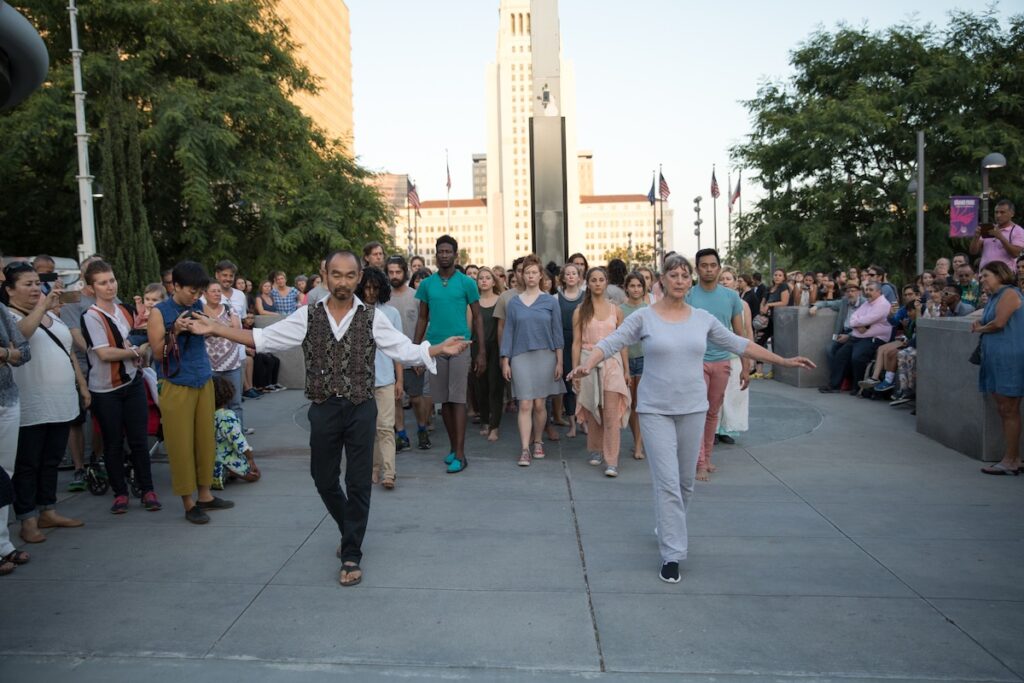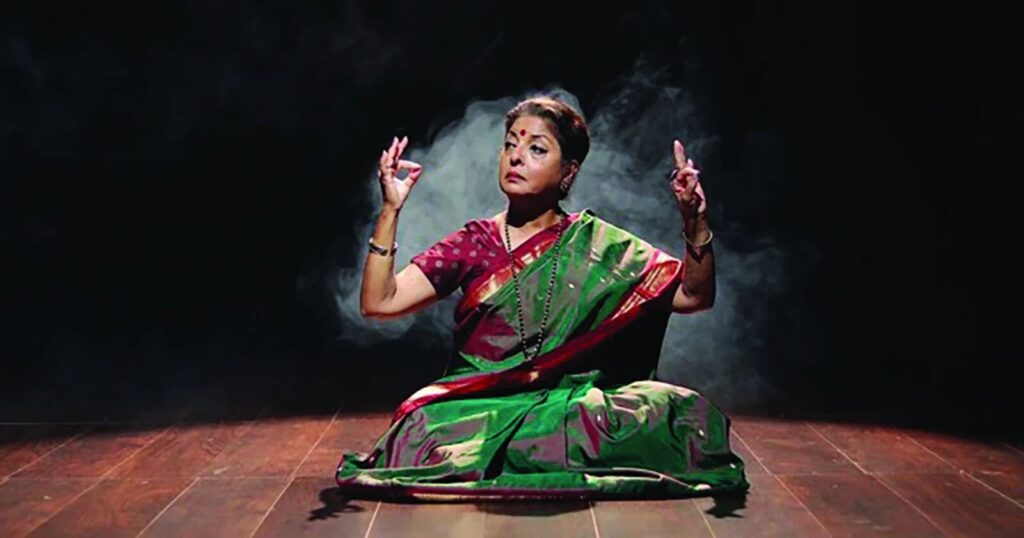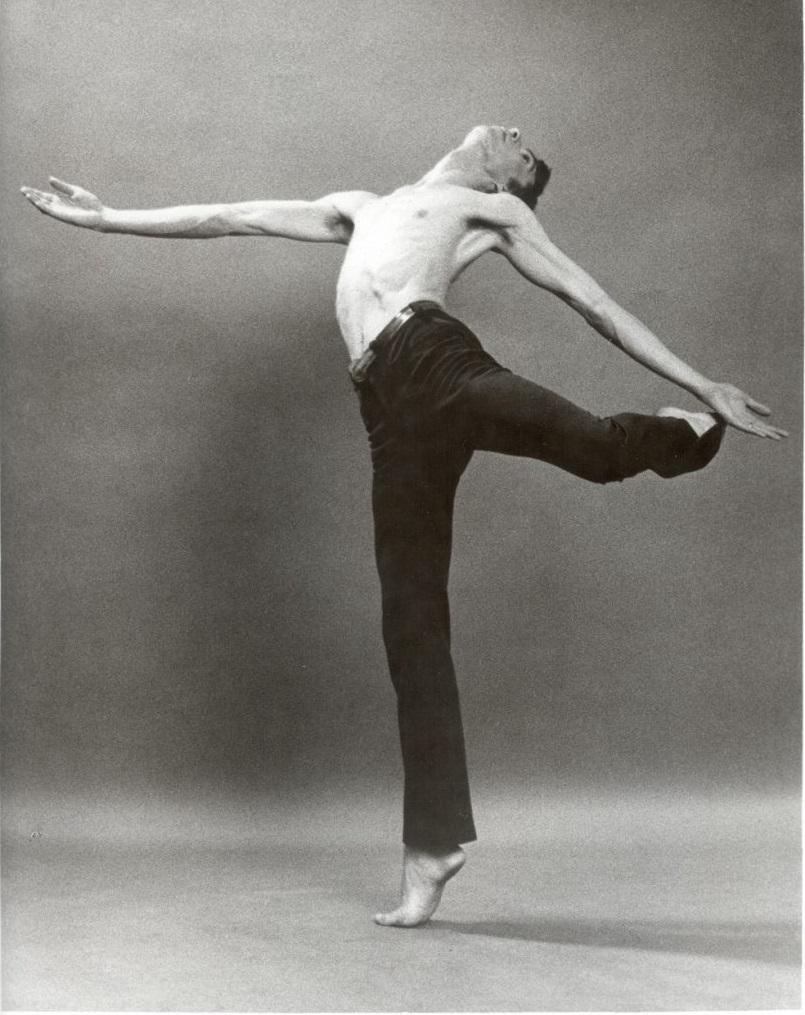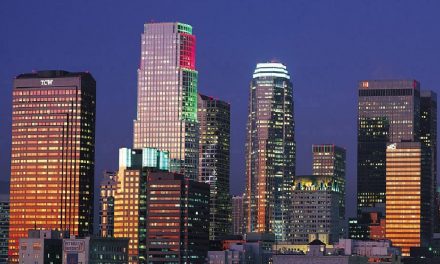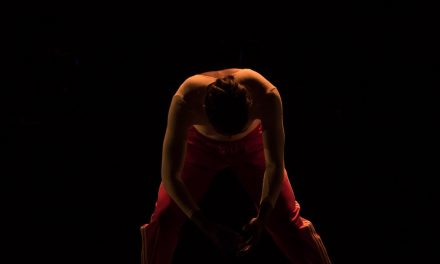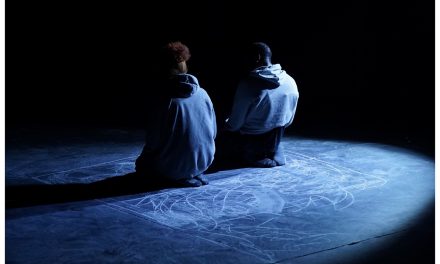For the 40th anniversary of her contemporary company Donna Sternberg & Dancers, Sternberg reached outside her company to recruit three significant figures in LA dance to perform with her in Thriving, this Saturday and Sunday at the Helms Design District in Culver City.
Thriving provides a rare chance to experience four distinct dance genres in the hands of a quartet who know their art. From India, Ramya Harishankar has fostered the art of South India’s classical Bharatanatyam through solo performance and with her Irvine-based Arpana Dance Company. From modern dance, Jeff Slayton danced in New York and internationally with Merce Cunningham and Viola Farber, led his own Jeff Slayton & Dancers in Long Beach before founding and editing LA Dance Chronicle. From Japan, Oguri brought Butoh and cultivated the mesmerizing form at Body Weather Laboratory in Venice Beach. A mainstay of the SoCal’s contemporary dance scene, Donna Sternberg’s background with Donald Byrd and other contemporary choreographers led to her own Santa Monica-based Donna Sternberg & Dancers, a contemporary group particularly known for revelatory explorations pairing choreographers and scientists.
In an interview, Sternberg explained she wants to reference the practice in many cultures outside the U.S. that celebrate dance masters at each stage of extended careers, often bestowing honorific titles that recognize their legacy status.
“I wanted to help dispel this idea that creativity was something you lose as you get older. While the technical proficiency may not be as awe inspiring as it once was, there are so many things an older performer brings to a performance that younger people just can’t because they don’t have the life experience,” Sternberg said.
“Several years ago, Netherlands Dance Theater had three different companies. A youthful, junior company, the main company, and a company of mature dancers that was fabulous. I saw Alicia Alonso perform when she was blind at 65, still dancing on pointe. I just saw David Rousséve completely command the stage in his one man show,” she continued.
Sternberg was especially moved seeing Bill T. Jones perform a solo show when he was older. “In one moment, he just raised his arm, yet it was one of the most impactful dance experiences I’ve ever had, because there was intention, there was concentration, there was embodiment in that one simple gesture. He was stunning!” Sternberg summarized. She admitted that as a dance person, she may look at it with different eyes than the general public, but for Sternberg those experiences are indicative of the maturity that an older dancer brings.
Asked how these three came to join her for Thriving, Sternberg admitted she wanted “to get people from a broad base, people significant in different dance genres, people who have contributed a lot, and people who made a difference in the SoCal dance.”
“I think that they should be recognized and should be honored in the way elders who have really given a lot deserve,” she emphasized.
A native of Japan, a meeting with Butoh’s founder Hijikata Tatsumi ignited Oguri’s passion for the form and its mesmerizing body/mind/nature connection. A member of Min Tanaka’s company, Oguri also built a solo career in Japan before moving to Venice Beach in 1991. With his wife Roxanne Steinberg, their Body Weather Laboratory has given Butoh an LA home and a base for teaching, performing, and producing. For more than 30 years, Oguri has performed and developed collaborative projects with musicians, sculptors, and other artists, including the ongoing and ever-changing Flower of the Season performances.
Sternberg admitted she asked Oguri partly because she really likes Butoh.
“I think Butoh is stepping into a time warp. It slows down time so your actual experience of time is not in the linear way that we normally experience it. If you can let yourself drop whatever it is you’re thinking of and go with it, I think it’s an extraordinary experience,” Sternberg explained. “I’ve seen Sankai Juku and other Butoh artists from Japan, but I don’t know of any other Butoh artists of Oguri’s caliber in the Los Angeles area. I wanted to include it because it is a fascinating dance form that can be a rewarding challenge for audiences. I think this will be an interesting antidote to the mile a minute technical frenzy that people usually see.”
Born in India in Chennai, the capital of the state of Tamil Nadu, Ramya Harishankar was drawn to Bharata Natyam (Bharatanatyam), but after several years in group glasses, devoted herself to one on one studies, first with K.N. Dakshinamurthy, then later with Swamimalai Rajaratnam. Bharatanatyam evolved from Southern India court and temple dances and flourished despite colonial British efforts to ban it. In an interview, Harishankar explained she hesitates to use the word ‘dance tradition’ because that would indicate it was the same generation after generation, when the dance form evolves as a language to communicate any thought, idea, story or emotion.
When she and her husband moved to Irvine in 1982, Harishankar found a South Asian community hungry to learn Bharatanatyam. The teaching led to performing, then to forming her company Arpana Dance Company in 1985. She has described dance as a type of prayer and ‘arpana’ means ‘offering.’ Harishankar has taken the company to Europe, throughout the U.S. and two tours of India. After 40 years, she continues to dance, create and teach.
“Ramya is a master in Bharatanatyam and I’m kind of in awe, having worked with her on several projects.” Sternberg said, “She continues to perform and even to this day is rooted in her dance, performing here and returning to perform in India.”
Born in Virginia in 1945, Jeff Slayton began dance lessons to correct hip dysplasia, lessons that led to his professional career built in New York performing with the Merce Cunningham Dance Company and later with the Viola Farber Dance Company. Lured to California in 1978 by the chance to teach at Cal State Long Beach, Slayton started his own company Jeff Slayton & Dancers, which toured for six years. Recruited to bring his knowledge to reviewing dance, the dearth of dance coverage prompted Slayton and his partner Martin Holman to found LA Dance Chronicle which he continues to lead and edit.
Asked about inviting Slayton, Sternberg described seeing him perform with Merce Cunningham and later with Viola Farber.
“Jeff was an extraordinary modern dance technician. I mean, this guy could balance on half toe for like, 20 years. When he first moved here, I used to take his community classes, and Jeff scared the holy crap out of me,” she recalled with a chuckle. “If you didn’t get what he was giving you, he did not always have a whole lot of patience, but he was so articulate, such a good teacher that I continue to take from him. Jeff has such a rich legacy of what he’s contributed to Los Angeles, teaching, his company, and then he started LA Dance Chronicle.”
“Jeff is one of the foremost rooters for dance here and I wanted to put a spotlight on him. I mean, he’s willing to perform with an oxygen concentrator and severe neuropathy in his feet,” Sternberg concluded. “He sent me a video of his piece, and it’s exactly what I was looking for. He is not doing a ton of crazy movement, but his movement is intentional. It’s focused. It’s embodied, and during the time that he is performing, he draws you in. There’s nothing spectacular technically about it, but what’s spectacular is the experience and the skill he brings as a performer.”
After college in Wisconsin and dancing for choreographers including Donald Byrd, Mary Jane Eisenberg, Dance/LA, in 1985 Sternberg founded her eponymous Donna Sternberg & Dancers. Known for its collaborations, the company has built a following for its series pairing choreographers with scientists to translate scientific ideas and principles into movement.
And where does Sternberg see herself fitting into Thriving?
Well, I still move a lot. I probably move the most of the four of us. I don’t see my capacity as a dancer having diminished all that much. No, I can’t get my leg to the height I used to, but it still goes pretty high when I think it’s appropriate. The joy of moving in itself is what I’m about. There’s one part in my dance where I say the reason that I dance is because it’s the purest expression of who I am, and that’s, that’s why I’m doing it”.
At the end of the interview, Sternberg underscored the value of live performance. “People tell me they prefer to watch a video. A two-dimensional video is not the same as seeing a live performance, especially with dance. You don’t get the exchange of energy between the audience and the performer. You don’t get the point where the performer and the audience member meet and form a bond, a sense of community.”
Drawn from the worlds of modern dance, Japanese Butoh, South Asian Bharatanatyam, and American contemporary dance, each artist came to SoCal from somewhere else, and they stayed, bringing their honed artistry and becoming significant threads in the fabric of LA dance. Thriving also celebrates the mature artistry in their varied dance genres–Oguri, Ramya Harishanker, Jeff Slayton, and Donna Sternberg. Each brings a new work capturing where they and their art are at this point in time.
Donna Sternberg & Dancers 40th Anniversary- Thriving at the Helms Bakery Complex, 8745 Washington Blvd., Culver City; Sat., Nov. 8, 8 pm, Sun., Nov. 9, 3 pm, $25, $20 students/seniors. Purchase tickets here Thriving
Written by Ann Haskins for LA Dance Chronicle.
Featured image: Oguri – Photo by Denise Leitner.




